It seems we still live in the infancy of open government data, which is all about availability and quality. In this post we submit 9 suggestions to usher in the mature age: open data as a prized participation tool.
1. Ease of use
"Dataset" is too often a synonymous for off-putting and tedious. This isn't inevitable, as the following ideas show. Simple and eye-catching data visualisation can boost a platform, making for instance use of infographics as appropriate. Structuring data with an emphasis on key content and links to supporting information rather than a one-block presentation makes users' life easier. A personal dashboard where e.g. favourites can be pinned prompts more recurring visits and more analytical use of the data. Search by keyword is indispensable to find your way around quickly and to drill down into the data. Aggregating relevant data within and across organisations instead of focusing on your own production has the potential to make your venue a by-default go-to when it comes to reliable government information for the area. For example, a city council could curate its own data but also integrate data curated by central government and open source data from not-for-profits and businesses.
Addressing the semantic links between various pieces of content can also be a huge plus. "Local Decision as Linked Open Data" by the Flemish Agency for Domestic Governance seeks to add metadata to council decisions so they can be processed automatically into structured systems linking them to other relevant acts (e.g. other council proceedings or policy memos from the administration). The Unlock software detects semantic relations between heterogeneous pieces of information relating to urban planning and presents them in thematic groups, without the need for manual tagging. Good news is both projects will be presented at Open Belgium 2017.
2. Civic data education
There is much to be taught about government data: how to find, understand, interpret, critique it, how to ask the questions that it can answer, how to use it as an evidence, how to find its applications in real life. The often-lacking civic education in schools should be improved to support more engagement later in life. And while we're at it, it should also be extended with modules on handling open data. One such example called the Urban Data School has been piloted in Milton Keynes, UK, which researchers found to be a success. They note that of course teachers need to be trained in the first place. So, why not extend adult training to wide ranges of the population?
3. Contextualise
Data doesn't always make sense taken in isolation. Providing context on a raw dataset can render it intelligible and make its practical relevance more obvious. One example is to present transcripts of assembly hearings together with a note on who speakers are, including their political membership, links to lobbies, financials contributions they've benefited from, or yet what work they've been responsible for. DigitalDemocracy.org does this, relying on the dedication of political science students. Yet one can imagine configurations where contextual information is automatically bound with data, e.g. via the adjunction of news feeds.
4. Answer data demand
An excellent way to create databases that are actually used is to let users have a say about what they want in it. A straightforward means of doing that is freedom of information (FOI) requests . Groups or individuals make a claim for punctual data and access is provided on a case-by-case basis. The problem here is that FOI procedures are mostly unpopular or just unknown, and the result of a claim –be it positive or negative– lacks publicity. Hopefully, civil society can rise up to the challenge. The website WhatDoTheyKnow facilitates FOI on top of being itself a repository of collected answers. Taking this logic one step further, one can imagine a crowdsourcing of problem and data definition. In the process of opening up its data, government would broadly invite end-users to stress out those among their issues which can be alleviated with data, and what type of data is needed for each.
5. Reach out strategically
Citizens must get to know there is a new information offer for them, hence advertising open data platforms to the broader public is important. However, an easier and possibly more efficient step as an open data provider is to reach those organisations that bridge between government and citizens. Civil society is always in need of weapons for advocacy and to mobilise the crowd. Media groups are keeping their audience in the loop about all things public and have been seriously integrating large datasets in their work. Data journalism gets data into daily information, building from it as a new range of sources opening up additional perspectives, and illustrating or personalising storytelling.
6. Tools for mobilisation
If data is to be spread, users need to be equipped. Handy solutions to share precise bits of information instantly make it more likely for data to find its way to society. A transcript fragment or video snippet that is one click away from social media or emailing can readily go with the flow of users' daily communication. Having the option to set up an alert on the topics or sources that matter most to you also greatly increases the chance you'll see the database as a mine for advocacy or monitoring. Both ideas have already become reality on DigitalDemocracy.org. According to Senator Sam Blakeslee, managing the project, that's simply how you turn "an exploration tool into a mobilisation tool"¹.
7. An opportunity for efficiency gains
Why not hitting two targets at once? Open data platforms have an outward utility, but can also add value in the running of government services. Silos are the disease of bureaucracy, primarily because they prevent information from flowing smoothly to where it is needed. Data disclosure and easy access can thus offer tremendous gains internally. From this starting point, it becomes difficult to argue open data is unaffordable. That's also a great incentive for administrations to curate and share data by default, which leaves them only a small effort away from providing the public with comprehensive data platforms. A strong illustration here is the Open Ahjo system implemented by Helsinki city council.
8. Engage the web community
Government platforms and the citizens' routine are often poorly connected. Web-based or mobile applications therefore are a welcome addition in many cases. Since this kind of solutions doesn't normally originate in government, leveraging the developer community is key. The difficulty lies in finding how. Helsinki city council came up with interesting solutions. It set up Forum Virium, a venue where city officials and developers can meet up monthly and exchange about their needs and ongoing projects. Datademo was launched as a direct incentive to create apps building from government data. This competition gives upfront seed funding to all participating teams and more financial support to winning projects –total budget: €48,000 (only). One requirement: apps must use data curated by Helsinki or Finland authorities to inform citizens and make them more engaged in policy-making. The city of Paris also opened up large quantities of data and is now gathering interest for this resource among developers and business actors via the website DataCity initiative.
9. Integrate with participation mechanisms
Participation and open data shouldn't be miles apart. This statement can be made quite literally when it comes to civic tech. There is no reason why citizen engagement happening online couldn't share a location with data repositories. Shortening the journey between the two, a research suggests, is promising for the quantity and quality of participation. And that is easily understood: one would hardly look for council decisions on local government websites, but would easily take interest in excerpts of it popping up next to a related discussion topic on the area's crowdsourcing platform. But note the logic applies to other cases. When an open data policy actively targets software developers, a third dimension can be added to this online destination as a welcome desk. When data trainings are deployed, learning materials are aptly located next to databases that could be used for real-conditions exercises.
(Reference used: ¹CityLab)



Share